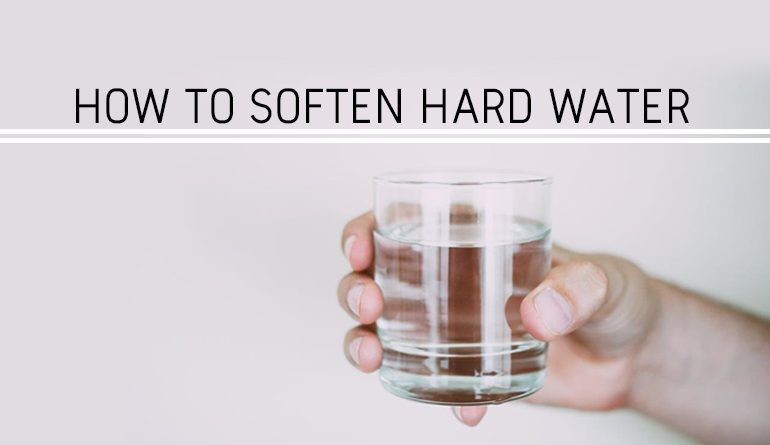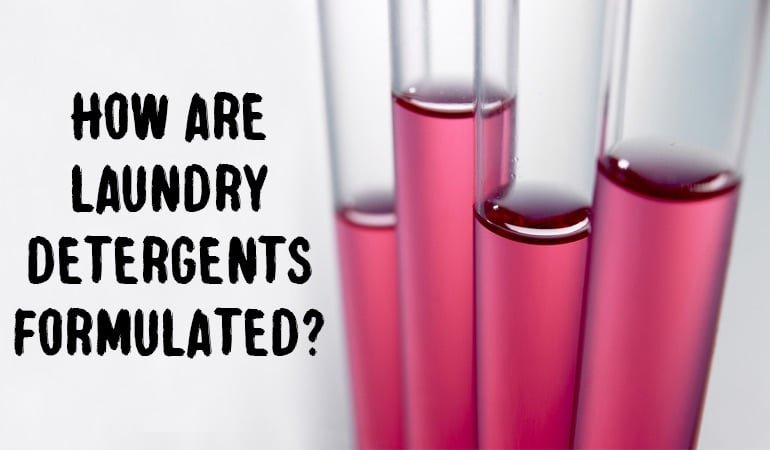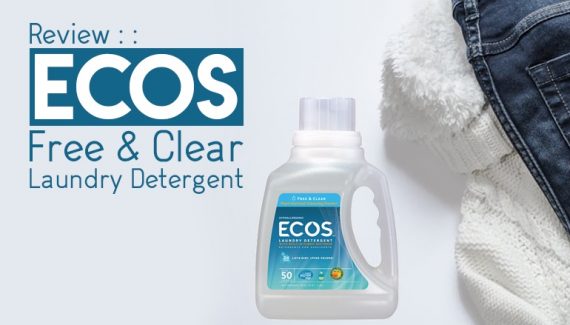Safe Household Cleaning is reader-supported. All reviews are independent and any products reviewed are purchased by the site owner. To help fund this model, some of the links on the site are affiliate links. If you decide to make a purchase from one of these links, this site will receive some commission. At no cost to you. It helps keeps this place running. Learn more
Hard water can be extremely troublesome. Hard water can irritate skin. Hard water can make washing products ineffective. Hard water can clog pipes, damage washing machines and ruin your kettle.
If your skin has ever felt itchy after showering – likelihood is you live in a hard water area.
If your shampoo, shower gel, face wash or soap does not lather well – the likelihood is you live in a hard water area.
If you’ve recently moved and are having to use an increased amount of washing detergent to remove stains from clothes – the likelihood is you live in a hard water area.
Soft water, however, does all of the opposite.
Soft water is extremely gentle to your skin.
Soft water allows shampoo, shower gel, face wash or soap to lather well.
Soft water lets 100% of your washing detergent be available to remove stains.
Learning: Soft water is an ease to live with, hard water is not.
Which may bring you to ask;
- Can you soften hard water at home?
- How do you treat hard water naturally?
- Can a water filter remove hardness?
First, you need to understand exactly what hard water is and therefore how you can help get rid of hard water fast.
What is hard water and soft water?
Most water looks alike – however inside a clear glass of water there thousands of dissolved minerals which are entirely invisible to your naked eye. One glass of tap water can have a high content of minerals – another glass of tap water can have a low content of minerals.
You can think of this like table salt dissolved in water. When table salt (NaCl) is solid it’s a magnetic combination of a positively charged sodium ion with a negatively charged chlorine ion. When table salt’s dissolved in water sodium and chlorine atoms are magnetically attracted to water molecules and therefore dissolve to make a colorless solution.
Rainwater is soft. Tap water can be hard.
Soft water is water with a low content of 2 specific minerals – calcium and magnesium.
Hard water is water with a high content of these minerals.
How does water become hard?
Rainwater which has not filtered through the earth is an exceptionally pure form of water. When water evaporates it leaves behind dissolved solids i.e. calcium and magnesium ions. Therefore when evaporated water eventually falls as rain – it is soft.
Rainwater can however also become hard – hard water is created when rainwater flows through sedimentary rocks i.e. rocks which are in part made up from calcium and magnesium.
Limestone is a rock with a high content of calcium.
…which is exactly what’s reforming when you see limescale build up in your washing machine or kettle. Water is literally redepositing dissolved rock inside of your utilities.
Difference between temporary and permanent hardness of water
When you see limescale build-up inside of your kettle you know the kind of hard water you have is a temporary hardness. Hard water can be both temporary and permanent. Temporary hardness or temporary hard water is a term used to describe hardness which can be removed or reversed on boiling i.e. dissolved calcium ions precipitate into your kettle, pipes or washing machine.
Permanent hardness is a term used to describe hardness which cannot be removed or reversed with boiling.
The science bit: Temporary water hardness is usually caused by dissolved calcium carbonate, permanent water hardness is caused by dissolved calcium sulfate.
You have permanent water hardness if you don’t see limescale build-up but instead see soap scum, your washing detergents not working as effectively or your skin getting itchy and sensitive.
Does boiling water make it soft?
Now that you understand temporary hardness can be reversed with boiling you may be wondering – can I boil my tap water to get rid of hard water?
Short answer: If you have temporary water hardness, yes you can.
Boiling hard water causes calcium and magnesium minerals to precipitate out of water and onto your kettle. This sounds strange because usually heat makes solids dissolve faster – however in the case of salts which make your water hard – it’s the opposite.
The reactions looks like this;
Soluble calcium hydrogen carbonate Ca(HCO3)2 + heat -> Solid calcium carbonate CaCO3 + carbon dioxide CO2+ water H20
Soluble magnesium hydrogen carbonate Mg(HCO3)2 + heat -> Solid magnesium carbonate MgCO3 + carbon dioxide CO2+ water H20
Boiling hard water will naturally make your hard water soft – however, this method has 2 very significant drawbacks;
- Your kettle will clog with limescale
- It’s expensive (!)
Enormous drivers for why you may want to soften hard water naturally – in a different way.
How can we soften water and remove the hardness?
To soften the water you need to naturally remove or decrease the amount of dissolved calcium and magnesium ions. There are ways you can do this at home i.e. by adding an ingredient to your bath water and there are ways you can do this at home with the help of a brought piece of apparatus i.e. a filter.
These are the methods we’re going to explain in detail soon;
- Washing soda
- Borax
- Borax replacement
- Non-precipitating water softeners
- Filter with an ion-exchange resin i.e. a water softener
How to get rid of hard water: Washing soda
Washing soda is pure sodium carbonate – you might also have heard washing soda called soda ash. When washing soda is dissolved into water it can react with calcium and magnesium ions to form an insoluble precipitate i.e. once washing soda has reacted with calcium and magnesium ions they’re no longer available to stop your washing detergent from working properly.
Note: Hard water stops your washing detergent from working effectively because hard water ions can bond with detergent molecules to deactivate them. You, therefore, have to use more and more detergent to achieve the same cleaning power.
You can add washing soda to bath water, cleaning water and your washing load.
However, using washing soda to soften water has drawbacks;
- Washing soda can increase the alkalinity of your water – this can cause skin to become dry, irritated and sensitive
- Washing soda is a precipitating water softener i.e. it can clog your washing machine or leave residue in your bath tub
How to get rid of hard water: Borax
Borax sits in the exact same family of water softeners as washing soda. Borax is a precipitating water softener and it comes with the same drawbacks i.e. skin irritation and build-up. If either of these disadvantages are unacceptable to you – you’ll want to find what’s called a non-precipitating water softener.
Note: Borax has been recognized by the EU as toxic for reproduction, borax products sold in the EU are labeled with warnings such as “may damage fertility” and “may damage the unborn child”. In small concentrations, Borax is considered safe for use with <5.5% being deemed by the EU as safe for use in cosmetic products.
Buy a borax replacement water softer in the EU and it’s enormously likely you will be purchasing a box of sodium sesquicarbonate – Na2CO3.NaHCO3.2H2O. Sodium sesquicarbonate is a hydrated crystal made up from sodium carbonate and sodium bicarbonate and is very commonly found in bath salts.
Sodium sesquicarbonate can be found in nature and is, therefore, a great way to soften water naturally. It is however also a precipitating water softener which will increase the alkalinity of water.
How to get rid of hard water: Non-precipitating water softeners
If you have sensitive skin, eczema, psoriasis, seborrheic dermatitis or dry winter itch it’s a very good idea to switch a precipitating water softener for a non-precipitating water softener. Non-precipitating water softeners do not increase the alkalinity of water and do not leave behind a scum which could collect inside of your utilities.
Until very recently non-precipitating water softeners were mainly types of phosphates i.e. sodium hexametaphosphate or trisodium phosphate.
The change: Phosphates can cause damage to the environment and are costly to remove at water treatment plants. Therefore on the 1st January 2017, it was written into EU law that consumer products can contain no more than 0.3 grams of phosphates per dose.
Non-precipitating water softeners are now based on polymer type ingredients such as sodium polycarboxylate.
Nice to know: In chemistry, the reaction of sodium polycarboxylate with hard water ions is known as chelation and sodium polycarboxylate is, therefore, a chelating agent. In short, this means sodium polycarboxylate offers 100% of its bonds to hard water ions – normally chemical bonding takes 50% from each molecule.
How to get rid of hard water: Mechanical water softening units
Looking for a natural, fuss-free way to soften your water? Mechanical water softening units are what you need. Mechanical water softening unit’s work continuously wherever they are plumped into i.e. you don’t have to scoop in washing soda.
Mechanical water softening units work like this; Hard water is run through a ‘bed’ of beads – usually, these are sulfonated polystyrene beads. This bed of beads is hyper-saturated with sodium i.e. the same ion you find in table salt – sodium chloride/NaCl.
Ions of calcium are strongly attracted to sulfonated polystyrene beads and therefore end up replacing/displacing ions of sodium. In goes hard water (with calcium ions) outcomes soft water (with sodium ions).
Mechanical water softening units are therefore also known as ion exchange water softeners.
Overtime ion exchange water softeners become less and less active as fewer and fewer sodium ions are available for switching. Helpfully ion exchange water softeners can be easily recycled by passing an extremely concentrated brine/salt solution through the bead bed.
Advantages of soft water
While mildly hard water is much tastier and healthier to drink than soft water – hard water can be a nightmare for household cleaning, clothes washing and skin.
Common cosmetic and domestic cleaning products i.e. shower gel, washing detergent and face wash contain cleansing ingredients known as surfactants. Surfactants are molecules which have a charged end and a non-charged end. The non-charged end dissolves well in oil i.e. butter, olive oil or lard and the charged end dissolves well in water. Only when both ends are dissolved can clothing stains be lifted away.
Hard water stops washing detergents and cosmetic cleansers from working as effectively. When washing products are used in hard water – hard water ions bond with surfactants making them unavailable to bond with water.
The result: Soap scum and dirty clothes.
The advantages of soft water;
- Clean clothes
- No soap scum
- Happy skin
- Needing less product i.e. less washing powder for best results
Another major advantage of using soft water is that soft water is much, much kinder to the skin. Minerals left on the surface of the skin can aggravate your skin barrier causing the skin to become irritated and sensitive. In fact, living with hard water is positively correlated with higher incidence of childhood eczema.
The result: dry, red, irritated, sensitive, itchy skin.
The advantages of soft water;
- Sensitive skin friendly
- Cosmetic products such as face cleanser wash away with increased ease
- Helps maintain healthy skin pH
- Helps maintain healthy skin hydration
Bottom line: Hard water can make cosmetic and domestic cleaning products less effective. This can result in irritated skin or even a broken washing machine. It’s why so many cleaning products today contain chelating agents or other forms of water softeners.



4 Comments
It’s interesting that you point out that using a water softener in your home is good for the health of your skin. I want to start taking good care of my skin, so I’m considering having a water softener installed in my house. I’m going to look for a good company in my area that does water softener installation.
It’s cool that you point out that using a water softener in your home is good for your skin. I want to keep my skin nice and healthy, so I’m thinking about buying a water softener for my house. I’m going to look for a good business in my area that can install a water softener system for me.
Thanks for sharing this! I’ve been preparing to move to Phoenix this month and have been informed by a local there beforehand to install some water softeners and HVAC if I wanted to have a comfortable life in Arizona. Honestly, I have no idea what hard water is and I only learned through this article that you need a water softener to remove those pieces of minerals mixed in the water. I’m glad that I came across your blog and had a clear understanding as to why it’s important to have the basic knowledge to prepare myself whenever I encounter these types of problems.
Thank you for this post about water softeners. A family friend suggested installing a water softener. He gave us this link (https://americanhomewater.com/installing-a-water-softener-your-ultimate-guide/) and told us to follow the installation instructions. Now that we are knowledgeable about water softeners, we’ll go ahead and install one. I hope it goes well without a hitch. Cheers!